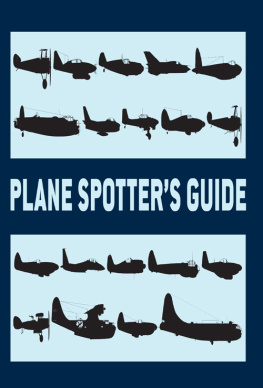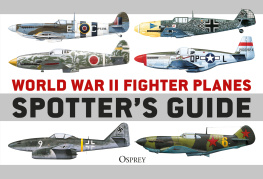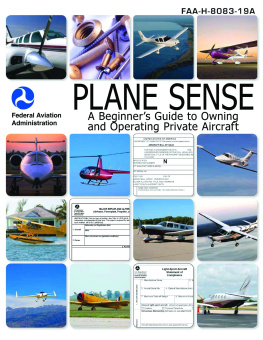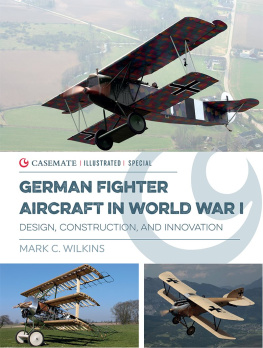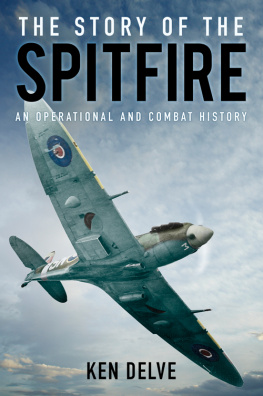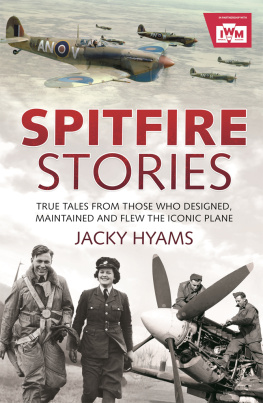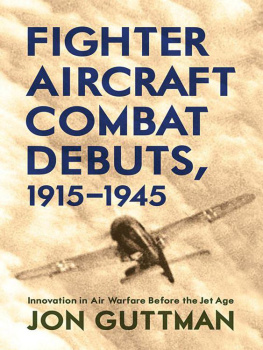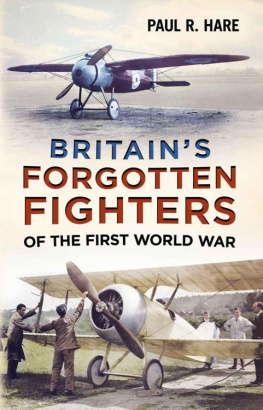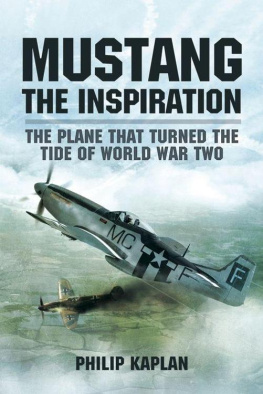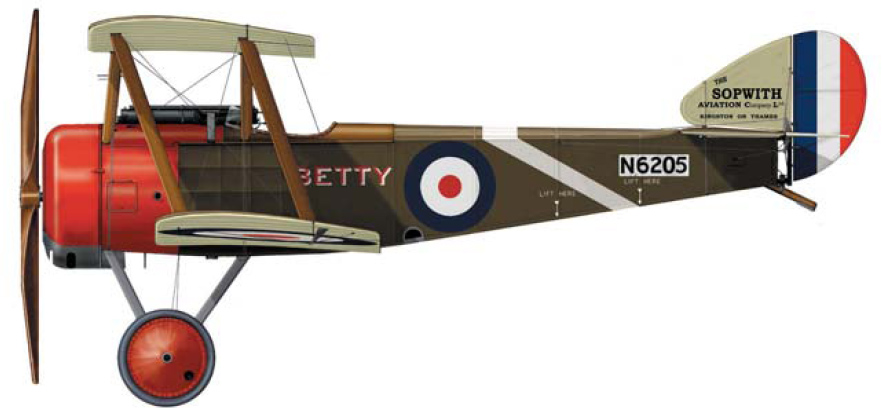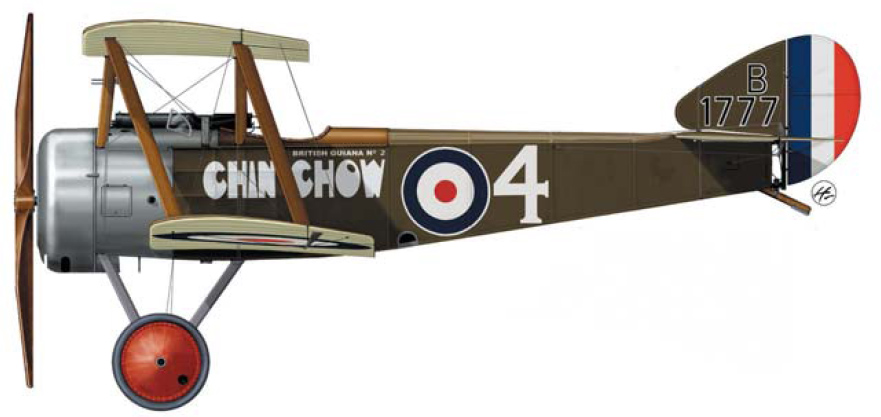E ssentially a scaled-down, single-seat derivative of Sopwiths 1 Strutter (the Royal Flying Corps first true two-seat fighter), the much-loved Pup was initially known as the Scout. However, due to its small size and strong family resemblance to the Strutter, it was quickly dubbed the Pup an appellation that eventually became official. Ordered by both the Royal Naval Air Service (RNAS) and the Royal Flying Corps (RFC), the first Pups reached the Western Front in September 1916, and remained in frontline service until rendered obsolete by the SE 5a and the Sopwith Camel in the late summer of the following year.
The best British fighter in the frontline for more than a year, the Pup enjoyed considerable success with the various RNAS and RFC units that received examples in France and Belgium. Indeed, some 29 pilots achieved ace status with the Pup, and 22 others who claimed victories with the aircraft later made ace flying Triplanes and Camels. These statistics are quite remarkable considering that the Pup units were up against deadly Albatros scouts with their twin Spandau machine guns the Pup was armed with just a solitary Vickers gun and far more powerful inline engines.
The key to the Pups success was the responsiveness of its flight controls and outstanding manoeuvrability, which endeared the scout to those that flew it. Some 1,770 Pups were eventually built, and although replaced on the Western Front in the autumn of 1917, production of the fighter continued well into 1918 in order to satisfy the demand for Home Defence fighters to engage marauding German bombers and Zeppelin dirigibles.
The Pup was also a favourite with instructors at training squadrons in England, again thanks to its docile handling characteristics when compared to later fighter types such as the Camel and SE 5a. Aside from operating with RNAS units on land, a number of Pups were also embarked aboard the Royal Navys trio of aircraft carriers from early 1917 until the wars end.
SPECIFICATIONS (PUP)
Crew: Pilot
Length: 19ft 3.75in (5.89m)
Wingspan: 26ft 6in (8.08m)
Height: 9ft 5in (2.87m)
Empty: 787lb (357kg)
Max T/O: 1,225lb (556kg)
Max Speed: 111mph (179km/h)
Range: endurance of 3 hours
Powerplant: Le Rhne 9C
Output: 80hp (59.6kW)
Armament: One fixed Vickers 0.303in machine gun forward of cockpit; anti-airship armament of four Le Prieur rockets, two per interplane struts
First Flight Date: February 1916
PLANE DETAILS
Joe Fall was joint leading scorer with the Pup, and he claimed three victories with N6205 on 23 and 29 April and 1 May 1917. He had the name BETTY painted on the fighters fuselage, and the aircraft also featured a red cowling and wheel covers. This C Flight machine was damaged on 11 May 1917 and following repairs it served in England. Later still it became 9901 and was assigned as a ships Pup.
Pup B1777 of Capt A. S. G. Lee, No 46 Sqn, Suttons Farm, Essex, August 1917
PLANE DETAILS
The colourful markings of this Pup were applied while the squadron was based at Suttons Farm, Essex, in JulyAugust 1917 during one of the Gotha bomber scares. Arthur Gould Lee had the name CHIN-CHOW painted beneath the cockpit as a reference to a character in a popular London west-end show of the time. His personal markings were removed after No 46 Sqn returned to France on 30 August. Lee scored five victories with B1777 between 4 and 30 September 1917.
NIEUPORT 17
T he highly successful Nieuport family of fighters were unique in their adoption of the sesquiplane wing layout, which saw them use the same wing design as a biplane, but with the lower wing possessing less than half the area of the upper flying surface. Supported by unique V-shaped interplane struts, the Gustave Delage-designed Nieuports were amongst the lightest and most manoeuvrable scouts of World War I thanks to the sesquiplane layout.
Tracing its lineage directly back to the revolutionary Nieuport 11 Bb of early 1916, the Nieuport 17 proved to be an outstanding success, despite suffering more than its fair share of wing shedding. The most successful of all sesquiplane fighters thanks to its greater wing area and structural refinements, the 17 equipped every French escadrille de chasse at some point during 1916. The RFC also purchased the 17 in significant numbers, examples reaching its units in France from July 1916. The Belgian, Italian and Russian air arms also made widespread use of the 17, having operated earlier Nieuport scouts. The standard 17 enjoyed almost a year of unparalleled success in combat, effectively ending the Fokker Eindecker scourge over the Western Front.
In an effort to keep the machine competitive in combat, Nieuport produced the 17bis in late 1916, this version featuring a 130hp Clerget 9B engine in place of the 110/120hp Le Rhne 9Ja/Jb that had powered the standard 17. The aircraft also boasted full-length fuselage side fairings. These modifications did very little to improve the scouts overall performance, however, and only a small number of 17bis were delivered to the French and the RNAS.
The follow-on Nieuport 23 and 24 were scarcely distinguishable from the 17, and none could match the speed and rate of climb of the SPAD series of French fighters. Nevertheless, the sesquiplanes remained in production until the end of World War I, by which time production of all Le Rhne-engined Nieuports had exceeded 7,200 aircraft.
Nieuport 17 A213 of Capt A. Ball, No 60 Sqn, Savy, France, September 1916
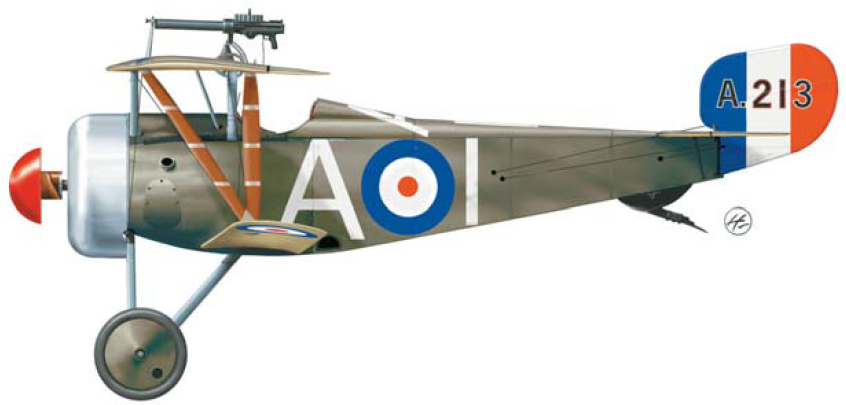
SPECIFICATIONS (NIEUPORT 17)
Crew: Pilot
Length: 19ft (5.80m)
Wingspan: 26ft 9in (8.16m)
Height: 7ft 10in (2.40m)
Empty: 825lb (375kg)
Max T/O: 1,232lb (560kg)
Max speed: 103mph (165km/h)
Range: endurance of 1.75 hours
Powerplant: Le Rhne 9Ja
Output: 113hp (94.2kW)
Armament: One fixed 7.7mm Vickers machine gun immediately forward of the cockpit and one moveable 7.7mm Lewis gun over the top wing
First Flight Date: January 1916
PLANE DETAILS
A213 was received by the RFC on 3 August 1916 and transferred to No 60 Sqn on 16 September. It was assigned to 19-victory ace Capt Albert Ball, and he claimed a further 11 successes with A213 by the end of September. Note the scouts distinctive red cne de penetration a hemispherical fixed fairing mounted on an extension of the stationary crankshaft. This aircraft was shot down in flames by an Albatros scout from Jasta 1 on 6 March 1917, killing No 60 Sqns commanding officer, Maj E. P. Graves.
Nieuport 17 N1895 of Lt C. Nungesser, Escadrille N65, Cachy, France, August 1916

